A research paper that was published a few days ago in the journal, Proceedings of the National Academy of Sciences, reports that evolution can follow predictable pathways when available solutions to a particular problem are severely limited. This new study found that resistance to heart-stopping cardiac glycoside toxins produced by some plants and animals for defensive purposes has independently converged across several lineages of insects, amphibians, reptiles, and mammals, after following a highly predictable evolutionary pathway.
Most Australian goannas die after snacking on cane toads
Goannas are a group of carnivorous monitor lizards in the genus Varanus. Almost all goannas live in Australia, but a few species can also be found Africa and southeast Asia. Goannas are not picky eaters -- they are predatory as well as scavengery -- and will eat any animal that they can fit down their throats. So goannas would appear to be impervious to most threats. But problems started for Australia’s goannas after people introduced the cane toad to northern Australia in 1935.
The cane toad, Rhinella (Bufo) marina, is the largest of the Bufonidae toads, with adults weighing an average of 1.8 kilograms (4 pounds). This toad is native to Central and South America, where it is known for its voracious appetite and fondness for beetles. In an effort to control several beetle species that were feasting upon the popular sugarcane crop, this toad was introduced into a number of locations in northern Australia.
Unfortunately, incomplete knowledge of the natural history of this toad, and of the beetles it was supposed to control, proved disastrous: the toads did not eat the pesky beetles, which wisely lived in the tops of the sugarcane, far out of the reach of the lumbering toads. But the cane toad introduction did prove wildly successful -- for the cane toads. So successful was it that these animals are moving inland from where they were introduced, and everywhere they pop up, they compete effectively with native wildlife for food and other resources, whilst spreading diseases.
But more damaging is that cane toads are poisonous at all stages of their life cycle -- eggs, tadpoles, toadlets and adult toads are all toxic. Cane toads have poison glands (parotoid glands) located behind their ears, and the toads release this poison when threatened. If an animal attempts to swallow the toad, its poison causes a rapid heartbeat, excessive salivation, convulsions and paralysis -- and it ultimately kills its victim.
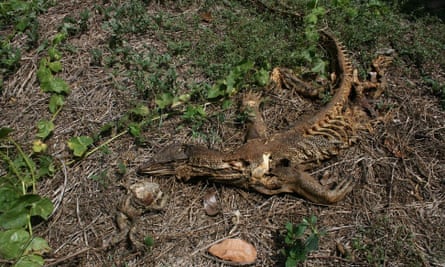
Needless to say, poisonous and invasive cane toads pose a huge problem for Australia’s native predators (doi:10.1071/WR04040). For example, native goanna populations have plummeted by as much as 90 percent after cane toads arrived. Since cane toads are steadily marching across northern Australia, the strategy has become one of documenting the inevitable population collapses that follow, and developing methods for reducing the damages to the native wildlife.
“We wanted to investigate how the goanna population will collapse once the toads reached our study site, and we were curious whether the goanna population would recover from such a population crash”, said evolutionary ecologist Beata Ujvari, a Senior Research Fellow at Deakin University and a Senior Honorary Fellow in the Faculty of Veterinary Science at the University of Sydney. Dr Ujvari co-led the research team with colleague, Nicholas Casewell, a Lecturer at the Liverpool School of Tropical Medicine.
When the toads reached their study site in 2005, the goanna population collapsed, as predicted, plummeting from more than 200 animals to fewer than five or ten individuals.
“Additionally, we wanted to understand why Australian goannas are so sensitive to toad toxins, compared to other goannas living in Asia and Africa”, said Dr Ujvari in email.
“Asian and African goannas regularly feed on toads and don’t die from their toxins. Therefore we decided to investigate the evolution of the gene which provides resistance to toad toxins in certain animals”, said Dr Ujvari.
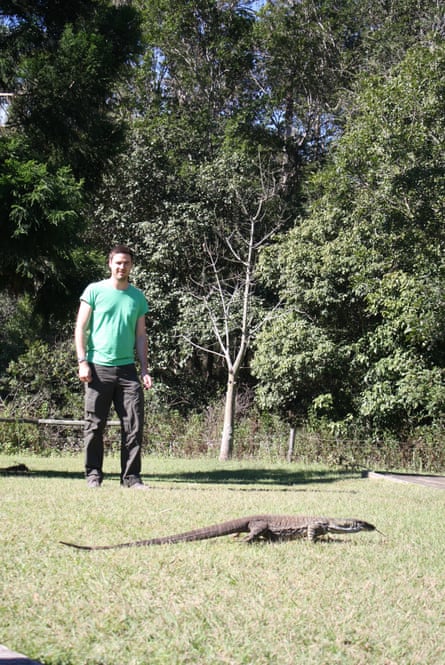
How some goannas can eat poisonous cane toads and survive
This study tracks the molecular pathway followed by a wide variety of unrelated animals as they all converged onto the same solution to an old problem: resistance to cardiac glycoside toxins.
Cardiac glycosides are a group of steroids produced by some plants, such as foxglove (digoxin), and animals, such as toads (bufadienolides), and milkweed butterflies (cardenolides). When consumed, cardiac glycosides can stop the heart from beating. These substances act by specifically binding to proteins embedded in cell membranes known as the sodium-potassium exchange pump (Na+/K+-ATPase). When cardiac glycosides bind to these exchange pumps, they stop the pumps’ function. When these pumps stop working, sodium ions rapidly build up inside cells. This increased concentration of intracellular sodium triggers a build-up of calcium ions, which escalates cardiac output by increasing the force of each heartbeat -- until the cardiac muscles stop contracting altogether.
Although cardiac glycosides are toxic to animals across the entire animal kingdom, a variety of animals have evolved resistance to them. For example, snakes and lizards have evolved resistance to frog toxins that results from just two, very specific, amino acid changes in the structure of their sodium-potassium exchange pumps. According to Dr Ujvari and Dr Casewell’s research team, these identical changes have occurred on at least four separate occasions, in three unrelated groups of snakes and in varanid lizards (note the four toad icons in Figure 1):
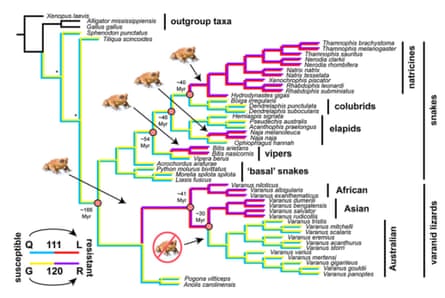
Toxin resistance arose in snakes as the result of the same amino acid changes in their sodium-potassium exchange pump proteins -- leucine (L) at position 111 and arginine (R) at position 120 -- despite the fact that snakes diverged from lizards more than 165 million years ago. These replacements were previously shown to confer resistance to toad toxins in African and Asian varanid lizards (doi:10.1111/j.1558-5646.2012.01751.x ).
These animo acid substitutions result from point mutations at just two key positions in the structure of one protein component, the α3 subunit. These animo acid replacements significantly reduce the ability of cardiac glycosides from binding to, and thereby inhibiting, the action of the sodium-potassium exchange pump. Thus, these point mutations render these animals resistant to the toxic effects of cardiac glycosides.
“Bottom line: This means that reptiles have found the exact same solution to evolving resistance to toad toxins on four separate occasions”, said Dr Casewell in email.
Even in unrelated animals, evolution of toxin resistance followed a predictable pathway
When Dr Ujvari and Dr Casewell’s team widened their investigation to include all 47 taxa that are resistant to cardiac glycosides (whether it was from a plant or an animal source), they found that resistance was due to two amino acid substitutions at just four positions: 111, 119, 120, or 122. Further, the team found that, of the 11 amino acids within this portion of the sodium-potassium exchange pump subunit, one specific amino acid site (111) must always change for resistance to evolve, whereas the second resistance-conferring change then occurs in one of three other amino acid sites (119, 120, or 122), which vary across species (Figure 2):
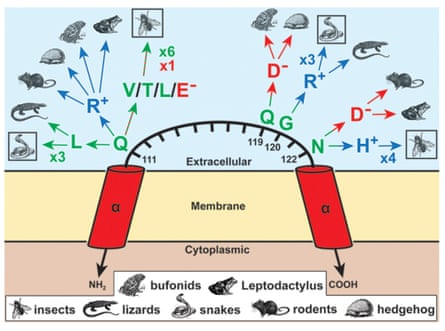
Therefore, across the tree of life, an incredible diversity of animal lineages evolved resistance to cardiac glycoside toxins by following very similar molecular pathways.
“[In addition to] snakes all having identical resistance-conferring changes, rodents and frogs and, separately, hedgehogs and toads, have identical resistant changes despite these animal groups having been separated from one another for over 300 million years”, said Dr Casewell.
Whether the the sodium-potassium exchange pump is vulnerable to cardiac glycoside toxins depends upon whether the toxins can bind to the pump proteins. When the pump proteins include amino acids with higher electrical charge at key positions, the toxin is repelled and therefore cannot bind nor block the action of the pump.
So the researchers measured the isoelectric point for the sodium-potassium exchange pumps of resistant and susceptible animals. Comparisons of the isoelectric point for each of the pump protein subunits indicated that specific sorts of amino acid changes occurred: every resistant species has a corresponding increase in isoelectric point (blue and green regions in figure 3) when compared to toxin-susceptible species (red and orange regions in figure 3):
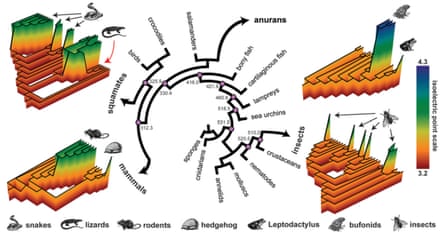
Thus, the research team concluded that evolution of toxin-resistance predominately results after a “charged” amino acid replaces a neutral amino acid in just a few key positions in the sodium-potassium exchange pump protein -- a change that appears crucial for the evolution of cardiac glycoside resistance, irrespective of the type of animal that evolved this resistance.
Evolution is random but it can follow a highly predictable molecular pathway
“Throughout my education, I was taught that evolution follows a more or less random pattern, and is rarely predictable,” said Dr Ujvari. “I was surprised to find such a clear pattern of predictable evolution across the entire animal kingdom.”
This study revealed that a wide variety of unrelated animals -- insects, amphibians, reptiles, and mammals -- can evolve the same solution to a specific problem in parallel.
“The repeatability of this process demonstrates that evolution can proceed along highly predictable paths at the molecular level,” said Dr Ujvari. “Our case study has important implications for conservation biology, by providing a simple predictive framework for assessing the potential vulnerability of native fauna to the introduction of toxic invasive species.”
Australian goannas originated in Asia, so their ancestors were originally resistant to cardiac glycoside toxins. However, after they moved to Australia, they lost their resistance roughly 30 million years ago (see the toad with a slash through it in the lower part of Figure 1).
“Australia is a toad free continent (or at least it was before the introduction of the cane toads) hence goannas living in Australia did not need to have a toad toxin resistant structure, and hence they have reverted back to the physiologically more efficient structure, which unfortunately also means that they became sensitive to cane toad toxin,” said Dr Ujvari.
Thus, what was a beneficial mutation in Africa and Asia became detrimental in Australia where this toxin was absent.
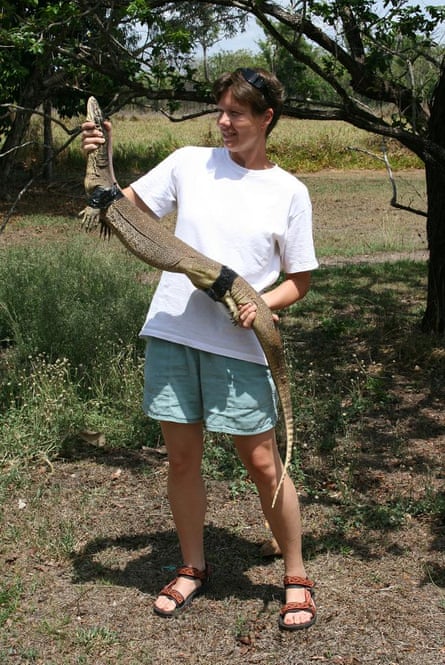
Dr Ujvari and her team are still monitoring the Australian goanna population after it collapsed in 2005 when the cane toads reached their study site.
“We are currently investigating the genetic effects of the population collapse, and trying to establish whether the population collapse has resulted in loss of population genetic variation,” said Dr Ujvari. She noted that a loss in genetic variation may make the few remaining goannas vulnerable to other challenges, such as parasites.
But apart from toxin resistance, this research has much broader implications for ecology, conservation biology, evolution -- and even for medicine.
“My research has recently been focusing on how animals cope with cancer, how do they avoid getting cancer and once they have cancer, how do they cope with it”, said Dr Ujvari.
“In short I am particularly interested in the ecology and evolution of cancer from both the disease point of view and also from the organism’s point of view”, explained Dr Ujvari.
“We aim to study whether the evolution of certain tumour suppressor, oncogenes or immune genes follow predictable paths which would help animals to counteract the detrimental effect of cancer.”
Source:
Beata Ujvari, Nicholas R. Casewell, Kartik Sunagar, Kevin Arbuckle, Wolfgang Wüster, Nathan Lo, Denis O’Meally, Christa Beckmann, Glenn F. King, Evelyne Deplazes, and Thomas Madsen (2015). Widespread convergence in toxin resistance by predictable molecular evolution, Proceedings of the National Academy of Sciences, published online on 7 September 2015 ahead of print | doi:10.1073/pnas.1511706112
also cited:
P. J. Mayes, G. G. Thompson, P. C. Withers (2005). Diet and foraging behaviour of the semi-aquatic Varanus mertensi (Reptilia : Varanidae), Wildlife Research 32(1):67–74 | doi:10.1071/WR04040 [free]
Beata Ujvari, Hee-chang Mun, Arthur D. Conigrave, Alessandra Bray, Jens Osterkamp, Petter Halling and Thomas Madsen (2013). Isolation breeds naivety: Island living robs Australian varanid lizards of toad-toxin immunity via four-base-pair mutation, Evolution 67(1):289–294 | doi:10.1111/j.1558-5646.2012.01751.x [£]
.. .. .. .. .. .. .. .. .. .. ..
GrrlScientist is very active on twitter @GrrlScientist

Comments (…)
Sign in or create your Guardian account to join the discussion